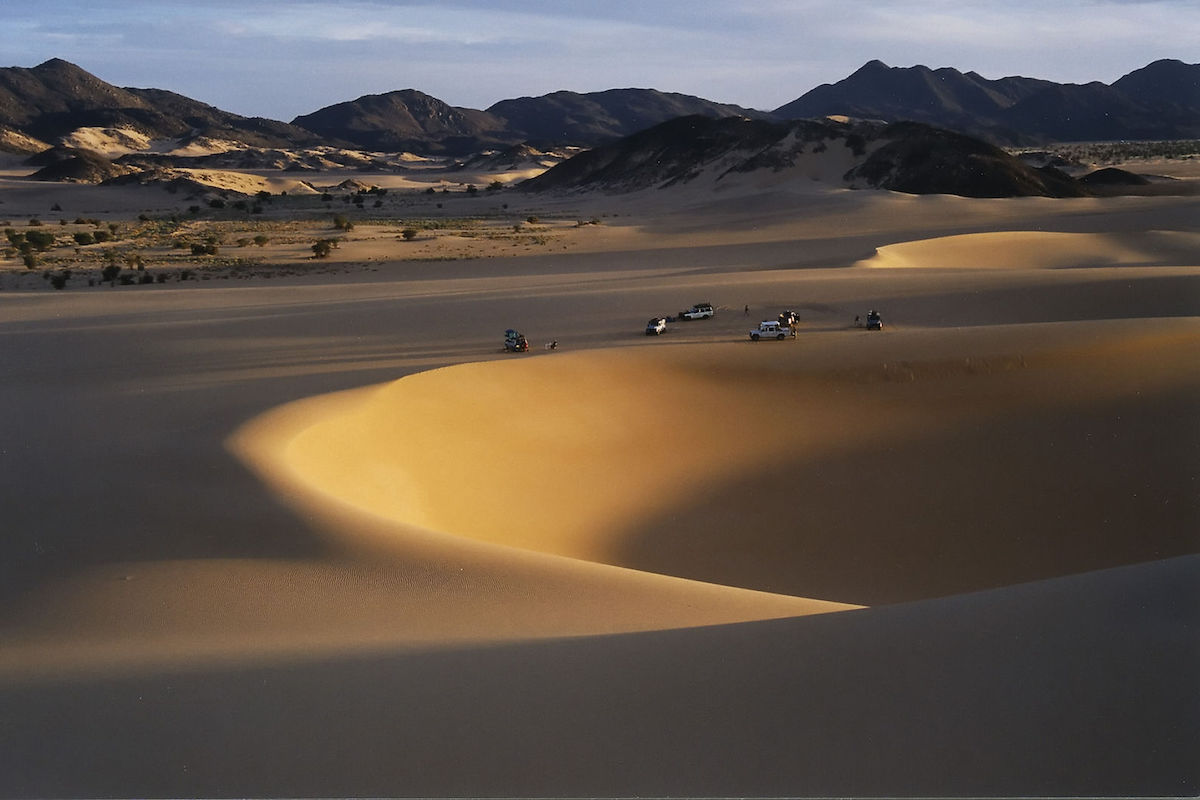
Let’s Explore the Otherworldly Beauty of Niger’s Aïr and Ténéré Natural Reserves
By: Heather Keys
Skip to Section
The Aïr and Ténéré Natural Reserves are a natural treasure and important protected area covering over 77,000 square km in the center of Niger. It’s split into two different zones: the eastern part of the Aïr Mountains and some sections of the western Ténéré desert.
This otherworldly environment has earned UNESCO World Heritage Site status, recognizing its outstanding universal value and cultural significance.
Let’s learn a little more about this amazing African destination!
Importance of the Aïr and Ténéré Natural Reserves
The Aïr and Ténéré Natural Reserves are home to a wide range of geographical features and wildlife that make it a truly stunning part of this world. At the time of its UNESCO World Heritage Site designation in 1991, it became the second-largest protected area in Africa (behind the Ouadi Rimereé in Chad)—its breathtaking scenery includes dune systems, valleys, canyons, cliffs, plateaus, and seasonal wetlands.
The Aïr Mountains in the eastern part of the reserve are a mountainous massif consisting of crystalline and volcanic rocks. They stand about 2000 meters in altitude and show traces of early metalworking.
In the western section of the reserve you’ll find the Ténéré desert, which is made up of hills, shifting dunes, a flat basin, and stunning blue marble mountains.
The reserve is home to an outstanding variety of plant and animal species. The wildlife here has been somewhat protected from human interference and displacement—a few notable species include Addax antelope, Dorcas gazelles, hyenas, cheetahs, ostriches, fennec foxes, and sand cats.
The Aïr and Ténéré Natural Reserves serve as a critical refuge for desert-adapted wildlife species typical of the Sahel-Sahara regions of Niger and the wider Sahara desert. The isolation of the Air Mountain massif and the historically low human population has allowed the survival of many species that have been eliminated elsewhere—though there are still challenges facing the animals and plants here.
Challenges to the Aïr and Ténéré Natural Reserves
The Reserve has been on the List of World Heritage in Danger by UNESCO since 1992, citing military conflict and ongoing civil disturbance between different populations in the region, resulting in displacement of people and upset to the ecological balance of the area. Illegal grazing and poaching of endangered and threatened species has also negatively affected the reserve, though improved management and surveillance have been put into place in recent years.
Another threat to the reserve is that of invasive plant species, such as Prosopis juliflora (a type of mesquite native to Central America and the Caribbean). This species is highly aggressive and can rapidly degrade the natural habitat of the reserve. Invasive plants like these can have devastating effects on the area’s biodiversity and ecosystem, and it’s essential to control their spread.
Can You Visit the Aïr and Ténéré Natural Reserves?
Tourism here is a bit sparse, though you can find tour operators that will guide you through certain areas—be sure to do your research and find a respectable operator that engages in sustainable and responsible travel.
Proceed with caution and consult a knowledgeable travel advisor before planning a trip—you’ll want to know which areas are safe to go to, what’s off-limits, and how to follow the guidelines and regulations set out by management authorities.
About the Author
Originally from Indiana, Heather believes every destination has a story worth telling and a reason to visit. With a deep love of adventure, history, and psychology, she shares travel trivia, tips, and inspiration to encourage you to explore the world with curiosity and optimism. Read her other articles on Frayed Passport here.Featured image by Jacques Taberlet on Wikimedia Commons.
Information published on this website and across our networks can change over time. Stories and recommendations reflect the subjective opinions of our writers. You should consult multiple sources to ensure you have the most current, safe, and correct details for your own research and plans.
Frayed Passport is a participant in the Amazon Associates Program, an affiliate advertising program designed to provide a means for sites to earn advertising fees by advertising and linking to Amazon.com. We also may share links to other affiliates and sponsors in articles across our website.




